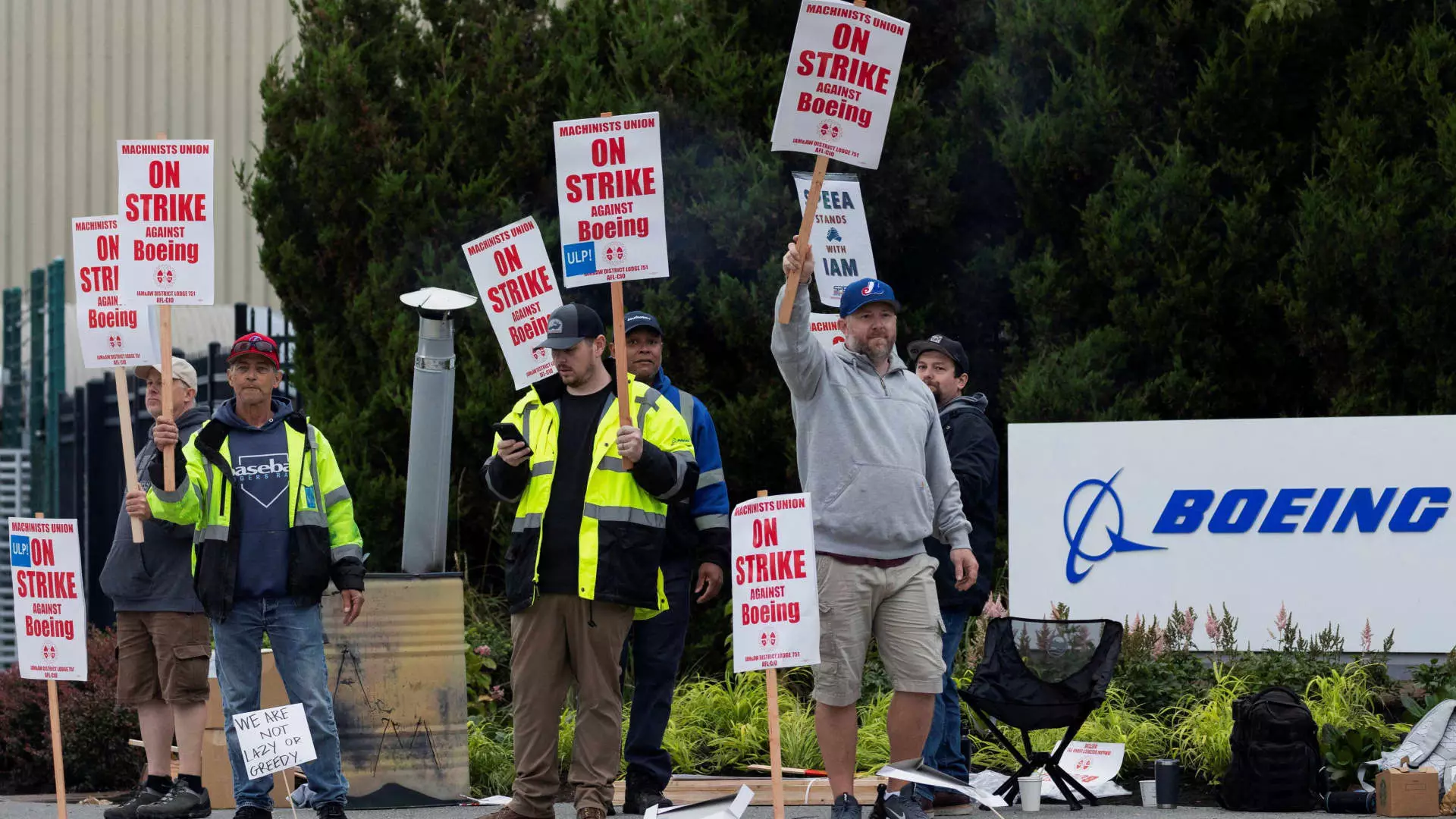Boeing is currently navigating turbulent waters, faced with a significant strike by its machinists which has entered its second week. This strike reflects deeper issues within the company and the industry as a whole, where rising costs and worker dissatisfaction have reached a critical point. With more than 30,000 machinists participating, the implications of this strike stretch beyond mere inconvenience; it’s a formidable blockage of Boeing’s production line, which is already reeling from previous manufacturing setbacks and a heavy debt load estimated at around $60 billion.
As the strike continues, Boeing’s financial health hangs precariously in the balance. The losses are estimated at an astounding $50 million per day due to halted production. With the added pressure of maintaining positive credit ratings—rating agencies have indicated that a prolonged strike could lead to a downgrade—the stakes have never been higher. The company’s new CEO, Kelly Ortberg, is under immense pressure to steer the organization back to profitability while managing the immediate fallout of the strike.
For the machinists on the picket lines, the struggle is deeply personal. With soaring living costs in the Seattle area—where median home prices have skyrocketed by 142% in the past decade—many workers find themselves unable to afford the basic necessities. Stories of machinists contemplating side jobs to survive during the strike paint a stark picture of their reality. They take pride in their craftsmanship and dedication, yet feel compelled to fight for compensation that reflects not only their skills but also the burdens of the current economic landscape.
Among the workers, sentiments are mixed between a genuine passion for their craft and the harsh realities of financial strain. Many machinists are determined to hold the line, having scrimped and saved in preparation for what could be a prolonged strike. As they forgo comforts such as dining out, the motion towards striking becomes a test of resolve, camaraderie, and mutual support within their unions.
Boeing’s Dilemmas
Boeing’s recent labor offer—a 25% wage increase over four years—has fallen short of worker expectations, fueling the strike. The union demands a closer approximation of a 40% increase along with bonuses and reinstatement of pensions lost over a decade ago. Negotiations have not yielded substantial progress, leading to frustration on both sides. Ortberg has expressed a commitment to resolving the issue, yet tempers are flaring as the clock ticks and workers’ frustrations grow.
The implications of this strike extend far beyond Boeing’s immediate operational capabilities. Production stoppages affect a vast network of suppliers who rely on Boeing for their business. Predictions indicate that the company will need to rapidly address not only the demands of the machinists but also the repercussions on its supply chain. For the aerospace industry, this disruption could mean delays in aircraft deliveries, ultimately affecting sales and the broader economy.
This strike is not an isolated incident but part of a wider pattern of labor unrest that has seen various sectors grapple with similar predicaments. Recent history is rife with labor challenges across multiple industries—from auto manufacturing to entertainment—where employees have successfully fought for improvements, often spurred on by surprising support from the public and even government officials.
Transportation Secretary Pete Buttigieg has publicly expressed hope that Boeing and the union will find common ground. The administration has been advocating for resolutions that benefit both workers and companies, especially given the current labor shortage in sectors demanding skilled work. The pandemic-induced layoffs have exacerbated the situation, causing long-term issues in recruitment and training within aerospace and defense operations.
Looking ahead, the resolution of this strike will require more than just negotiations over numbers. Both Boeing and the union must reflect on the evolving landscape of labor in America, characterized by increasing demands for fair wages, better working conditions, and long-term stability. With skilled labor in short supply, attracting and retaining talent will be critical for Boeing’s recovery and future growth.
Ultimately, this standoff is more than an immediate battle over wages—it’s a reflection of broader socioeconomic pressures that resonate across multiple demographics. It brings to light a vital narrative about dignity, respect, and the quest for equitable treatment in the workforce, ultimately demanding that corporations like Boeing re-examine their priorities and commitments to their employees. How the company emerges from this trial may set a significant precedent in both labor relations and corporate ethics moving forward.


Leave a Reply